Whether it’s a racing mind, your Twitter feed or that post-curfew coffee keeping you awake at night - you’re not alone. But while the latest figures suggest we’re a restless nation, the Holy Grail of a decent night’s sleep is not beyond our grasp.
From yogic breathing techniques based on Ancient Chinese wisdom to state-of-the-art sleep apps created by NASA funded sleep researchers, these soporific tricks will have you nodding off in no time.
Take A Tip From NASA
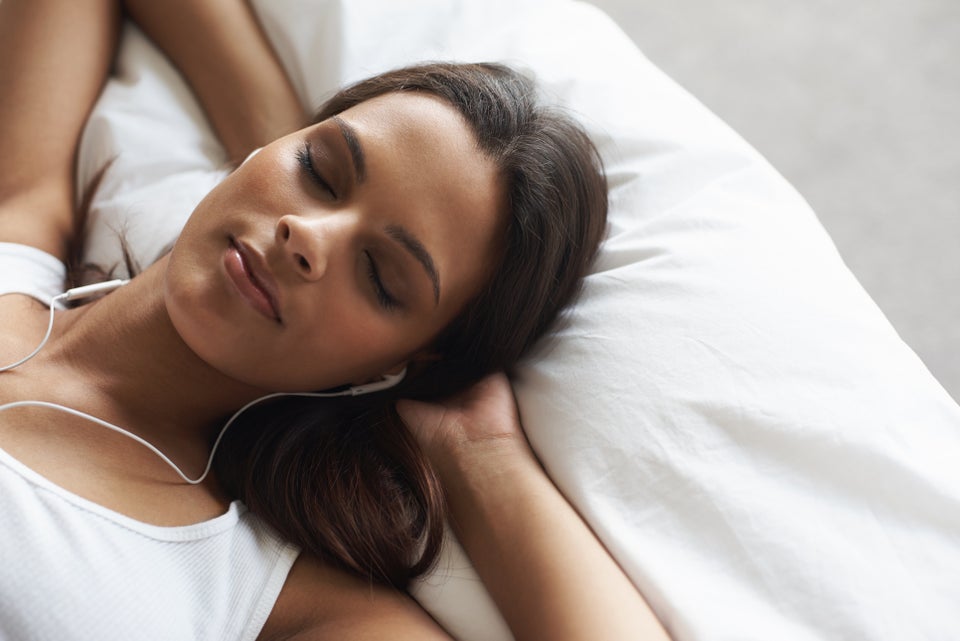
PeopleImages via Getty Images
There are sleep apps and then there is the Sleep Genius app. Created by the world’s leading authorities in neuroscience, sleep sound and music, it was developed following research helping NASA get astronauts to sleep.
Using a combination of neurosensory algorithms and sounds delivered through scientifically composed music it creates ‘an optimal sleep environment’ to balance REM and non-REM sleep. Clinical trials of the app were shown to be 77% effective in improving patients’ sleep patterns. It’s got to be worth a go, surely.
Using a combination of neurosensory algorithms and sounds delivered through scientifically composed music it creates ‘an optimal sleep environment’ to balance REM and non-REM sleep. Clinical trials of the app were shown to be 77% effective in improving patients’ sleep patterns. It’s got to be worth a go, surely.
Breathe Through Your Left Nostril
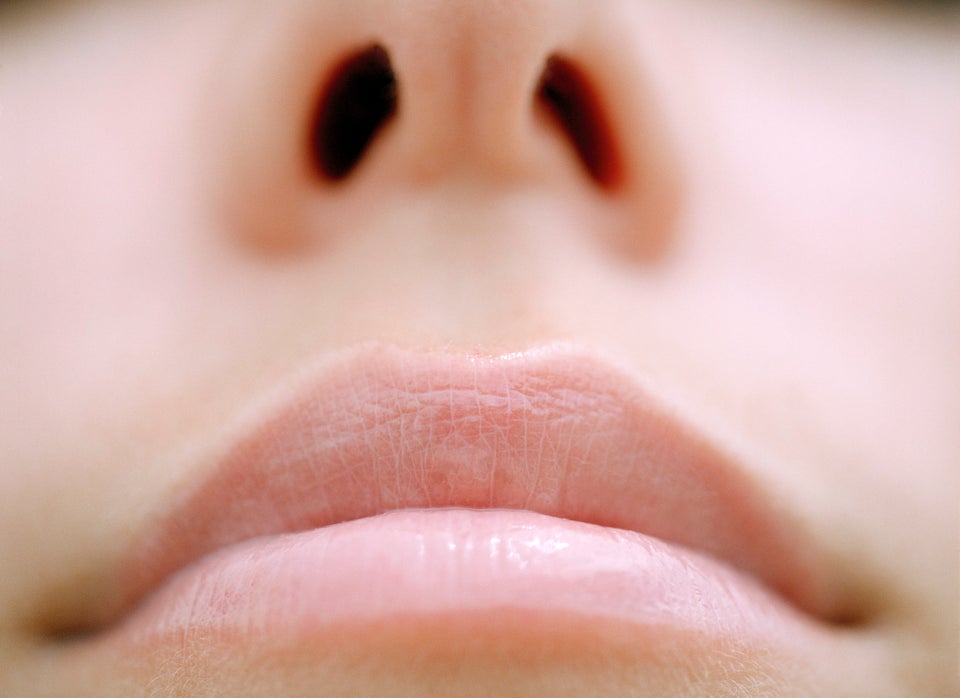
Veronique Beranger via Getty Images
Left nostril (Ida) breathing is a traditional yoga technique that is said to promote relaxation and aid the onset of sleep. “This breathing technique helps calm the mind,” says Cheryl MacDonald yoga elder and founder of Yogabellies.
“While lying in bed, close your right nostril with your right thumb, your other fingers stretched straight up pointing towards the sky. Rest your left hand on your left knee forefinger and thumb touching with other fingers straight and outstretched (Gyan Mudra). Close your eyes and concentrate on your ‘third eye’ (between the eybrows.) Begin to breathe long and deep through your left nostril only. Continue for three minutes.”
“While lying in bed, close your right nostril with your right thumb, your other fingers stretched straight up pointing towards the sky. Rest your left hand on your left knee forefinger and thumb touching with other fingers straight and outstretched (Gyan Mudra). Close your eyes and concentrate on your ‘third eye’ (between the eybrows.) Begin to breathe long and deep through your left nostril only. Continue for three minutes.”
Hum
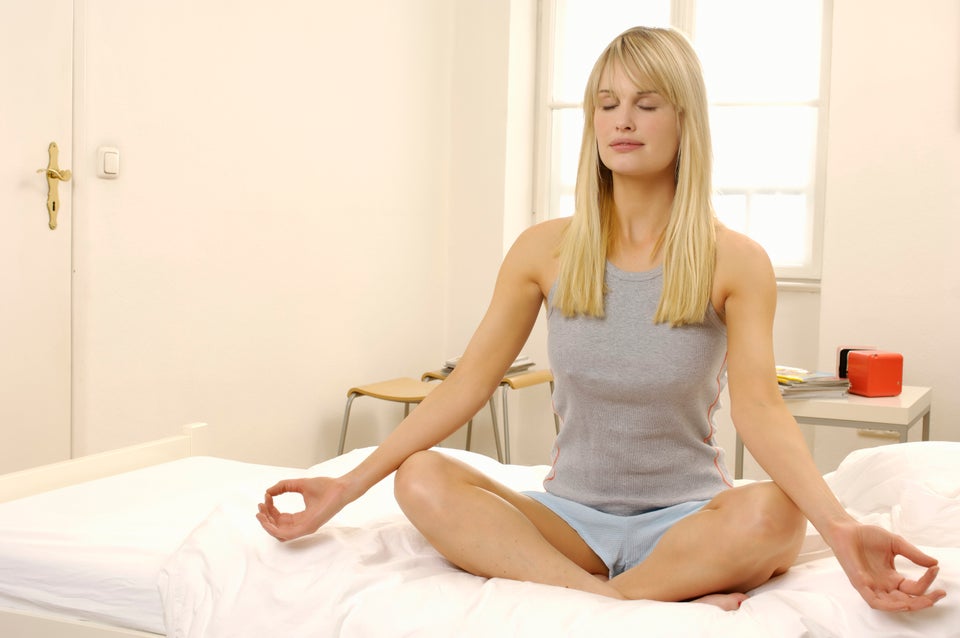
Kay Blaschke via Getty Images
“Another yoga technique that can help calm the mind and induce sleep is ‘Brahamarri, or ‘humming bee breath’,” says MacDonald.
“Lying down in bed, take a few deep breaths. Take the hands to the ears, elbows pointing out. Inhale through both nostrils and then exhale making a humming sound like a bee. Allow the length of the breath to extend naturally and without force, humming until the body is empty of breath and then inhaling again. Practice for five minutes each day.”
“Lying down in bed, take a few deep breaths. Take the hands to the ears, elbows pointing out. Inhale through both nostrils and then exhale making a humming sound like a bee. Allow the length of the breath to extend naturally and without force, humming until the body is empty of breath and then inhaling again. Practice for five minutes each day.”
Advertisement
Rethink Your Caffeine Curfew

FogStock/Alin Dragulin via Getty Images
Most of us try to avoid drinking coffee too close to bedtime. But what many of us don’t realise is just how long caffeine stays in the bloodstream.
“When you take a drug, it takes a while to reach its maximum concentration in your blood then, over time, its concentration decreases. When it gets to half of the highest level it was at, this is called its half-life,” explains John Groeger, Professor of Psychology at the University of Hull.
“Coffee reaches its half-life about five or six hours after you drink it. So if you have two cups of coffee, it’s the same as having one five or six hours later. If you have two coffees at 5pm, it’s the same as having one at 10’o’clock.”
Self-confessed caffeine fan Groeger recommends having a lunchtime curfew.
“When you take a drug, it takes a while to reach its maximum concentration in your blood then, over time, its concentration decreases. When it gets to half of the highest level it was at, this is called its half-life,” explains John Groeger, Professor of Psychology at the University of Hull.
“Coffee reaches its half-life about five or six hours after you drink it. So if you have two cups of coffee, it’s the same as having one five or six hours later. If you have two coffees at 5pm, it’s the same as having one at 10’o’clock.”
Self-confessed caffeine fan Groeger recommends having a lunchtime curfew.
Keep A Sleep Diary
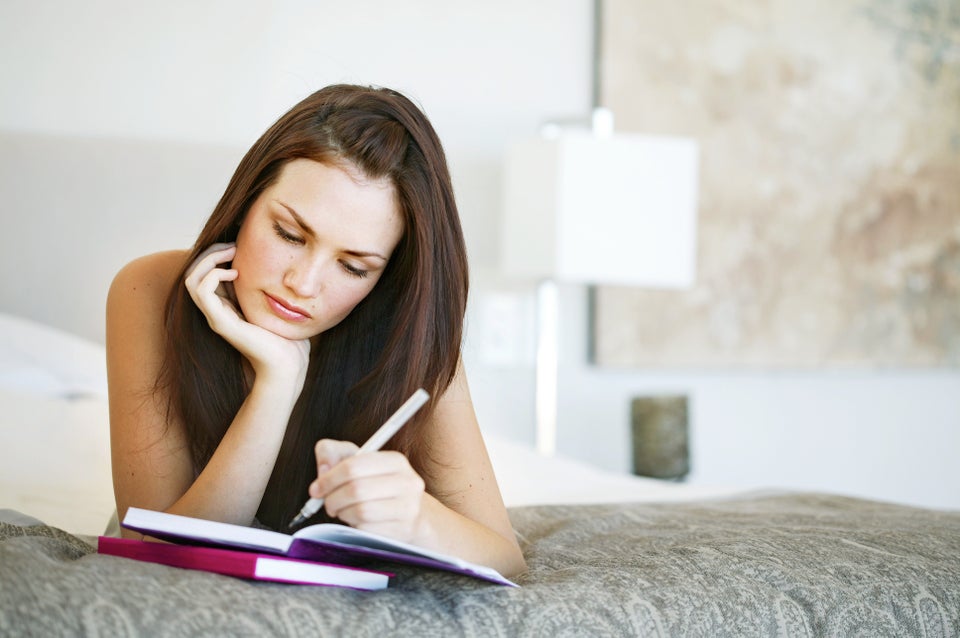
George Doyle via Getty Images
Keeping a sleep diary can reveal just how much you’ve been sabotaging your own sleep patterns. On one page, record your sleep patterns, including how long it took you to get to sleep, how much you were awake during the night and how sleepy you felt the next day. Then, on the opposite page, make a note of any lifestyle factors, such as your coffee and alcohol intake, eating patterns, how much exercise you did, and the times of day you did them.
Over time, this should help you build a clear picture of how much sleep you need and the triggers that affect your sleep. That way you can tailor your sleep hygiene plan to meet your specific needs.
Over time, this should help you build a clear picture of how much sleep you need and the triggers that affect your sleep. That way you can tailor your sleep hygiene plan to meet your specific needs.
Exercise Every Day
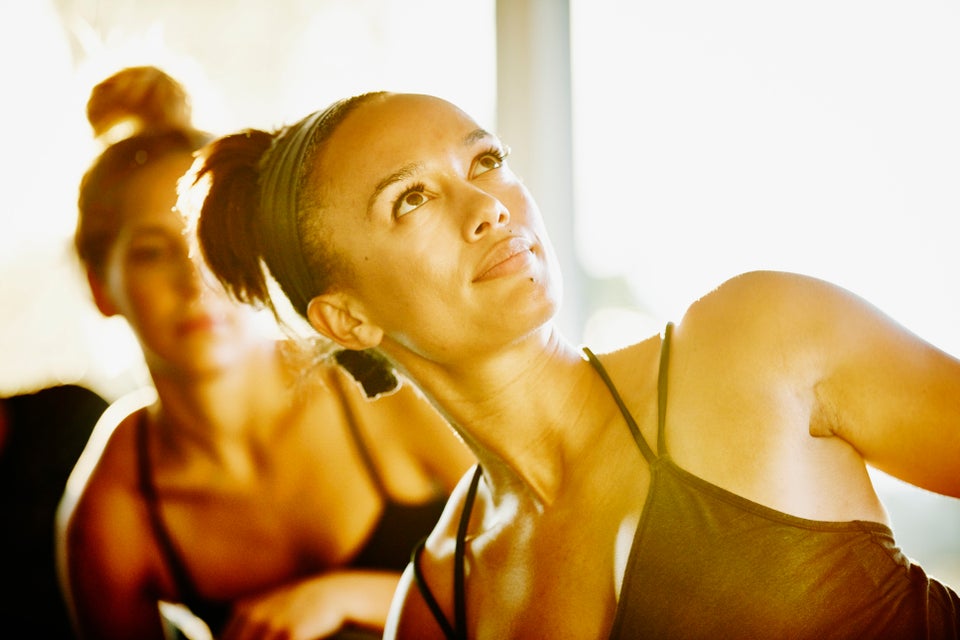
Thomas Barwick via Getty Images
“Try to exercise for 20 to 30 minutes every day. Daily exercise can help to use all of the energy you've stored from eating and so can help you sleep,” says Jade Wells, a Physiologist at Nuffield Health.
“When you workout is equally important because exercise can also cause a spike in adrenaline, which keeps your body in an alert state. For maximum benefit, try to get your exercise about five to six hours before going to bed.”
“When you workout is equally important because exercise can also cause a spike in adrenaline, which keeps your body in an alert state. For maximum benefit, try to get your exercise about five to six hours before going to bed.”
Advertisement
Get A New Bed
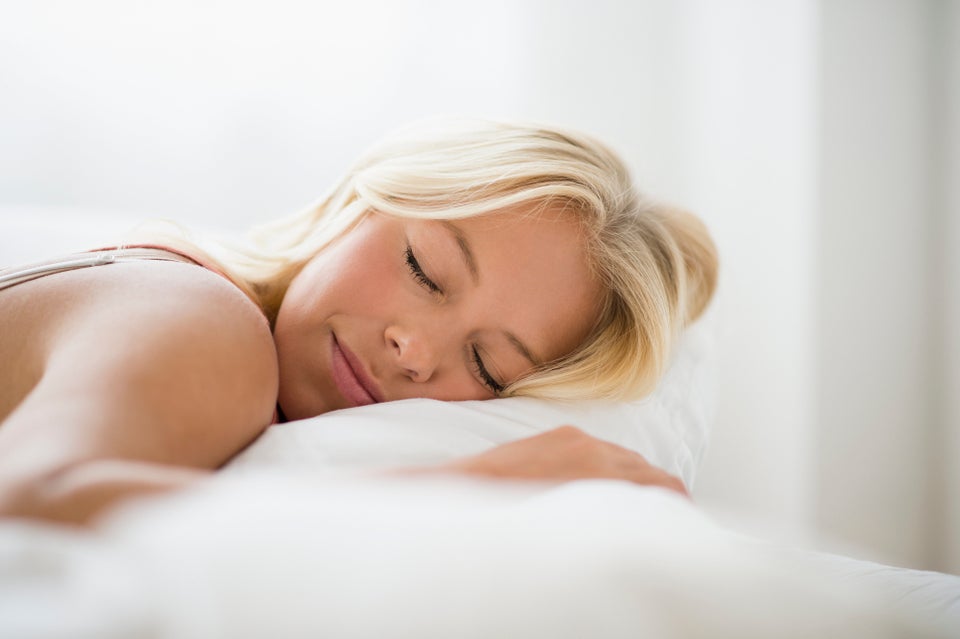
Jamie Grill via Getty Images
According to leading sleep expert Professor Chris Idzikowski, buying a new bed could be more effective than sleeping tablets.
His New Bed Old Bed Study, commissioned by The Sleep Council back in 1998, measured the amount and quality of sleep people were getting on a new bed compared to their old one, found that, when replacing an uncomfortable bed, a new bed was associated with an increase of 42 minutes sleep.
By contrast, he said that research on Over The Counter (OTC) sleep aids has never shown a better improvement than 5-10 minutes extra sleep.
His New Bed Old Bed Study, commissioned by The Sleep Council back in 1998, measured the amount and quality of sleep people were getting on a new bed compared to their old one, found that, when replacing an uncomfortable bed, a new bed was associated with an increase of 42 minutes sleep.
By contrast, he said that research on Over The Counter (OTC) sleep aids has never shown a better improvement than 5-10 minutes extra sleep.
Rewind You Day
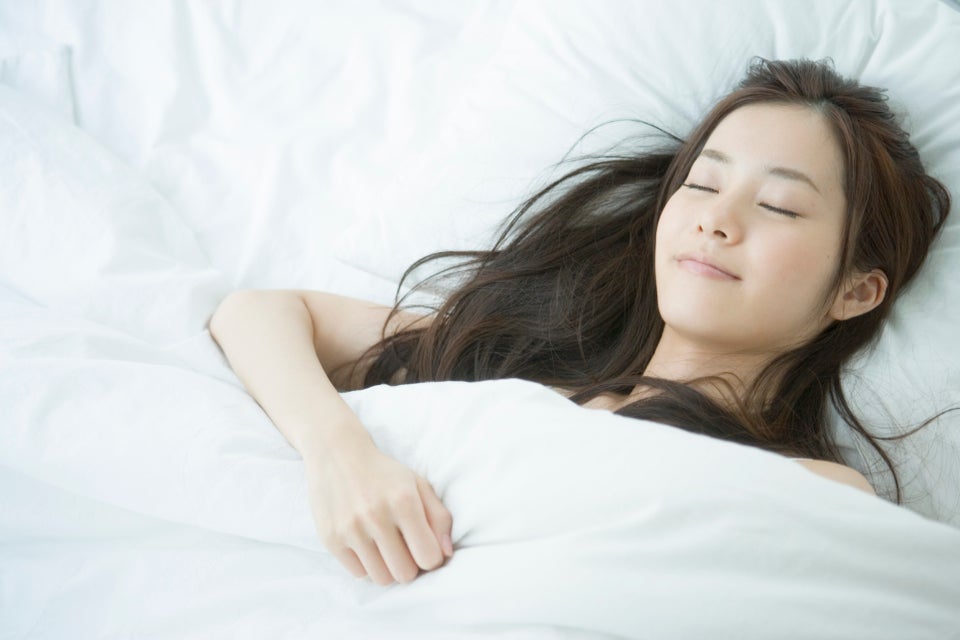
Indeed via Getty Images
Giving your brain a simple, not-too taxing, task to focus on can be helpful way to distract your mind from ruminating on today’s awkward meeting or tomorrow’s insurmountable to-do list, helping to restore balance and calm the mind.
“Try to remember your day backwards,” suggests chartered physiotherapist and author of The Good Sleep Guide, Sammy Margo. “Sounds easy until you try it. Start from your bedtime routine and work your way backwards to when you woke up. You probably won’t make it to lunchtime!”
“Try to remember your day backwards,” suggests chartered physiotherapist and author of The Good Sleep Guide, Sammy Margo. “Sounds easy until you try it. Start from your bedtime routine and work your way backwards to when you woke up. You probably won’t make it to lunchtime!”
Don't Worry About It

Dave and Les Jacobs via Getty Images
According to the Great British Sleep Survey 2012, 79% or those surveyed said they lay awake worrying about how long they'd been lying awake!
If stressing about sleep is what's keeping you awake, it could be time to break the cycle by switching your thoughts to something else. Try getting out of bed and engaging in an activity, such as light reading, and forget about catching those ZZZZs. Once your mind has calmed down, you might be surprised how quickly you feel drowsy.
If stressing about sleep is what's keeping you awake, it could be time to break the cycle by switching your thoughts to something else. Try getting out of bed and engaging in an activity, such as light reading, and forget about catching those ZZZZs. Once your mind has calmed down, you might be surprised how quickly you feel drowsy.
Advertisement
Try Acupressure

Tetra Images via Getty Images
Research suggests acupressure, which involves massaging certain pressure points on the body, could help to improve sleep quality.
Leading sleep expert, Professor Chris Idzikowski suggests: “Put your thumb on the point between your eyebrows at the top of your nose, where there’s a slight indent. Hold for 20 seconds, release briefly and repeat twice more.
“Next, sit on the edge of the bed and put your right foot across your left knee. Find the slight indent between your big toe and second toe and press in the same way.
“Finally, still supporting your right foot, find the point just below the nail on the upper side of your second toe. Using the thumb and forefinger of your right hand, gently squeeze the toe.”
Leading sleep expert, Professor Chris Idzikowski suggests: “Put your thumb on the point between your eyebrows at the top of your nose, where there’s a slight indent. Hold for 20 seconds, release briefly and repeat twice more.
“Next, sit on the edge of the bed and put your right foot across your left knee. Find the slight indent between your big toe and second toe and press in the same way.
“Finally, still supporting your right foot, find the point just below the nail on the upper side of your second toe. Using the thumb and forefinger of your right hand, gently squeeze the toe.”